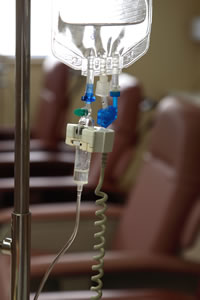Post-Chemo RPLND
What is it?
If not detected and treated early, testicular cancer often spreads to lymph nodes in the abdomen. Sometimes chemotherapy is the treatment of choice for the cancer that has spread. However, if chemotherapy does not destroy all of the cancer, patients may require surgery to remove lymph nodes in the back of the abdomen. This is known as post-chemotherapy RPLND.
After the tumors are surgically removed, they are sent to a pathologist to be looked at under a microscope.
- About half the time, the pathologist only finds scar tissue.
- About 40% the time, the pathologist find a type of tumor called “teratoma” that does not respond to chemotherapy but needs additional surgery to completely remove it before it can grow or spread.
- A low percentage of the time (10-15%), testicular cancer is found in the tumor that is removed. If this is the case, patients may require further chemotherapy.
What happens if I have tumors in my abdomen and do not have surgery?

If chemotherapy alone cannot eradicate the cancer that has spread to the lymphatic system, RPLND may be the next step.
If the tumors are scar tissue, they will slowly shrink over time. However, if the tumors are either teratoma or active testicular cancer, these areas can enlarge, spread to other parts of the body, and cause pain or injury to nearby organs. Unfortunately, we do not currently have an adequate method of being able to tell what type of tumor there is without surgical removal.
For more general information on RPLND, including benefits, potential complications, and post-operative recovery, see our primary RPLND page.
For more general information on RPLND, including benefits, potential complications, and post-operative recovery, see our primary RPLND page.